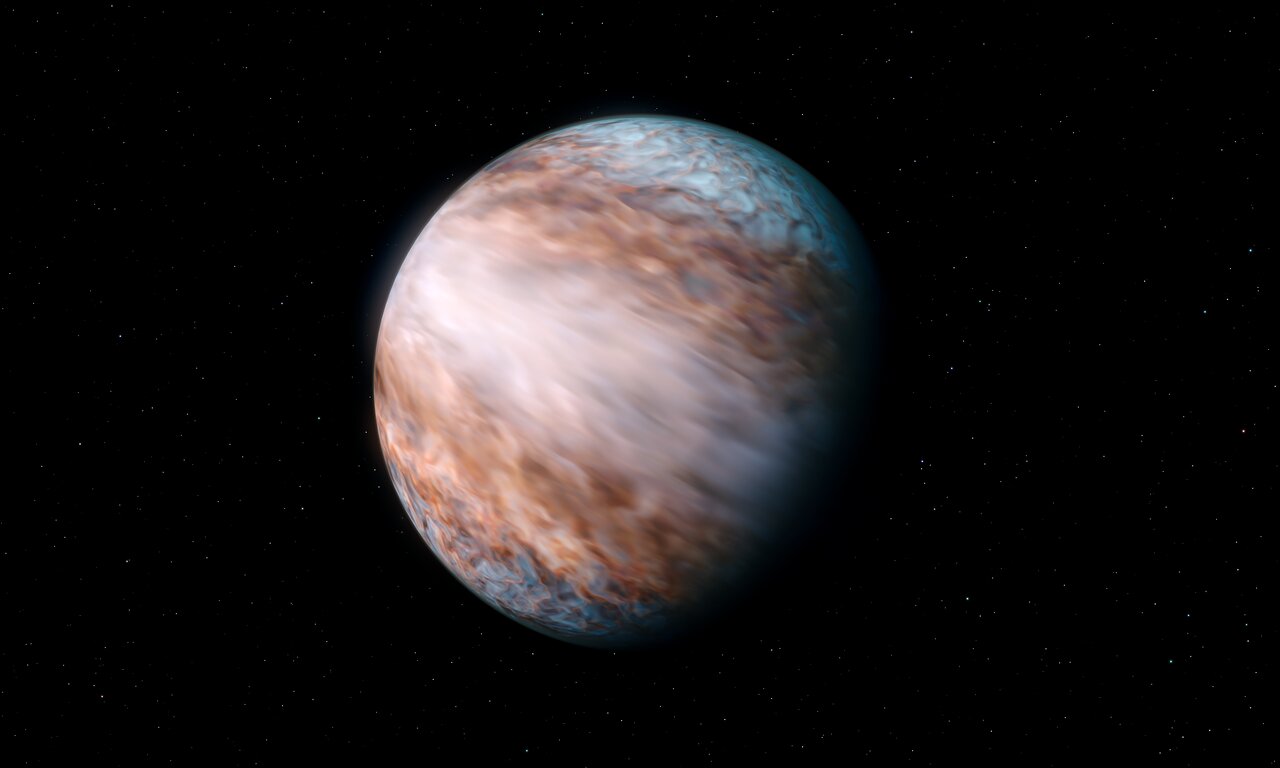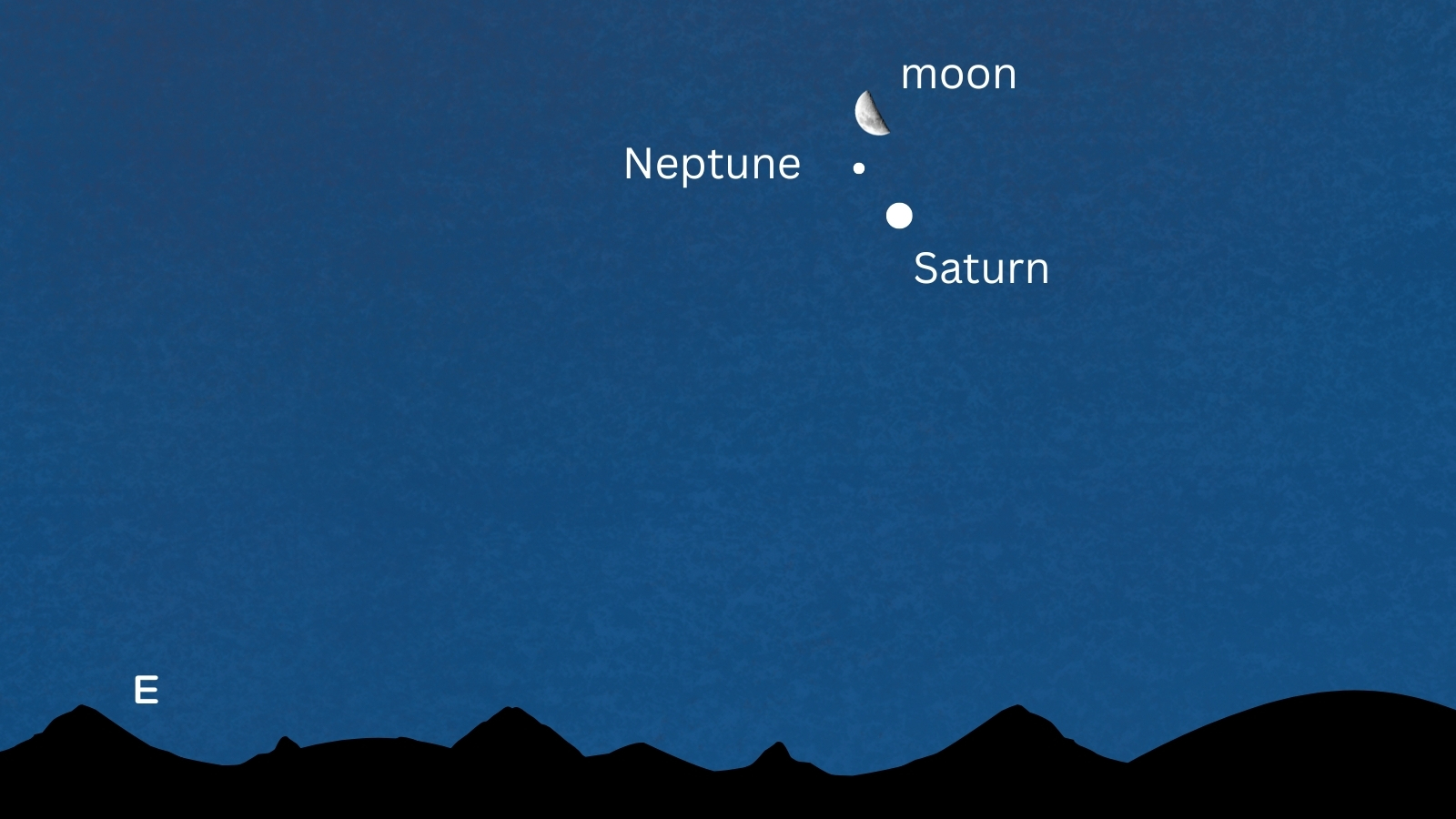Scientists discover exoplanet with supersonic winds — the fastest in the known universe
With winds blowing at 20,500 mph, "the planet has complex weather patterns just like Earth and other planets of our own system," scientists said.
Astronomers have found winds on a distant world that blow at a phenomenal 5.6 miles per second (9 kilometers per second), or 20,500 miles per hour (33,000 kilometers per hour) — the fastest winds ever measured on a planet.
The faraway world, a gas giant called WASP-127b that was discovered in 2016, orbits a star 520 light-years from Earth. It zips around its host star in just four days, following a slightly skewed orbit. The exoplanet is also likely tidally locked to its star the same way the moon is to Earth — but perhaps its biggest eccentric trait is that it is slightly larger than Jupiter, yet only 16% as massive, making it one of the puffiest planets known to astronomers. So, its heavily inflated nature enables eager astronomers to look through the upper layers of its atmosphere.
A team led by Lisa Nortmann of Germany's University of Göttingen used a spectrograph on the Very Large Telescope in Chile to observe WASP-127b as it passed in front of its star, blocking some of its light. By analyzing the filtered light, which included distinct dips or "fingerprints" of various molecules that absorbed light at different wavelengths, the researchers identified the presence of carbon monoxide and water vapor in the planet's upper atmosphere.

In studying that spectra further, the researchers say they were puzzled when they noticed two different wavelength peaks for these molecules, which indicated some of those molecules were moving away from Earth while others were moving toward Earth while others were moving away at the same speed.
"I was a little bit confused," Nortmann told New Scientist. "But with a little bit more careful data analysis, it became clearer that there are two signals. I was quite excited — my first thought was immediately that it has to be some sort of super-rotating wind."
Further analysis of the collected spectra showed the movement was maximum at the planet's equator, so the team concluded the observations could be explained by supersonic winds that were constrained to the planet's equator.
“This signal shows us that there is a very fast, supersonic, jet wind around the planet’s equator," Nortmann said in a statement. "This is something we haven’t seen before."
Breaking space news, the latest updates on rocket launches, skywatching events and more!
While the reasons for the staggering weather are not fully understood, the researchers interpret these winds to be six times faster than the speed at which the planet itself rotates. For comparison, Neptune holds the record for the fastest winds in our solar system; the winds on WASP-127b are an astonishing 18 times stronger.
The recent observations also suggest the planet has slightly different temperatures between its morning and evening sides, indicating it "has complex weather patterns just like Earth and other planets of our own system," study co-author Fei Yan of the University of Science and Technology of China said in the same statement.
This research is described in a paper published last week in the journal Astronomy and Astrophysics.
Join our Space Forums to keep talking space on the latest missions, night sky and more! And if you have a news tip, correction or comment, let us know at: community@space.com.

Sharmila Kuthunur is a Seattle-based science journalist focusing on astronomy and space exploration. Her work has also appeared in Scientific American, Astronomy and Live Science, among other publications. She has earned a master's degree in journalism from Northeastern University in Boston. Follow her on BlueSky @skuthunur.bsky.social
-
billslugg If the planet is tidally locked, the star stays fixed in the sky. There is no "morning side " or "evening side". I don't understand.Reply -
24launch Replybillslugg said:If the planet is tidally locked, the star stays fixed in the sky. There is no "morning side " or "evening side". I don't understand.
Sure it stays fixed in the sky, but the planet is still rotating and the atmosphere is whipping around it in the same direction as the rotation.
I had to play around with this in my head a bit. But think of the side of the planet that's leading into the orbit as the morning side and the side that's trailing as the evening side. The winds are whipping around in the same direction as the rotation, in fact six times faster. So as the winds go around the backside they cool making the "morning" side cooler as they come back around. And of course heat up more on the daylight side making the "evening" side warmer as they head back around the nightside.
20,500 MPH is nuts! Considering 17,500 is orbital velocity for Earth! -
George² Now I imagine how in 2050, with a new space telescope that is 50 times better than the best ones today, we can actually measure the wind speed of the closest exoplanets to us.Reply -
billslugg As viewed from the star, the planet is not rotating. The star never moves in the sky as seen from the planet. The planet rotates once per revolution, just like our Moon. With a star fixed in your sky, how do you know which way it rose? You don't because it didn't.Reply
As written, the article is meaningless. -
LemmyCaution Reply
Please help me with this. If the planet is tidally locked with its star, how could it possibly be rotating? And without any rotation what is causing those powerful winds? I'm lost on this one.24launch said:Sure it stays fixed in the sky, but the planet is still rotating and the atmosphere is whipping around it in the same direction as the rotation.
I had to play around with this in my head a bit. But think of the side of the planet that's leading into the orbit as the morning side and the side that's trailing as the evening side. The winds are whipping around in the same direction as the rotation, in fact six times faster. So as the winds go around the backside they cool making the "morning" side cooler as they come back around. And of course heat up more on the daylight side making the "evening" side warmer as they head back around the nightside.
20,500 MPH is nuts! Considering 17,500 is orbital velocity for Earth! -
billslugg A planet that is tidally locked to a star has one side constantly pointed to the star. If you go to the back side of the planet and look at the faraway stars, you would see them go by once per year. Thus a tidally locked planet rotates around its own axis once per revolution around the star, thus it rotates once a year.Reply
I don't know how the winds get going that fast. -
Classical Motion Only the wind would have a dusk and a dawn. And if it’s that size, and if it’s that close(4 day orbit) with it’s star, all kinds of unknown interactions might be happening. How fast is the star rotating? A planet like that might have a huge bulge at the equator. Might even bulge it’s star. Perhaps mound it’s star.Reply
Perhaps dusk and dawn refers to the planet transition?
I was assuming using the star’s back light for the spectrum of surface atmosphere analysis. I probably didn’t say that right.
The planet would have to be offside of star, with star blacked out for reflection analysis. If that’s possible.
I would disregard the velocity supposition. To enthusiasm.
But this is just a hayseed observation. And the young need disappointment. Very early on. It’s the spice of life. Try again. No one would do anything without disappointment.
It’s the motive for creation. Of many things. Beating our heads against the wall is one. -
George² In fact, I am convinced that winds of this speed are not even theoretically possible in planetary atmospheres.Reply -
LemmyCaution Reply
Thank you; now I understand how and why this exoplanet rotates. And as you say, this doesn't do anything to explain the unbelievably high wind speeds.billslugg said:A planet that is tidally locked to a star has one side constantly pointed to the star. If you go to the back side of the planet and look at the faraway stars, you would see them go by once per year. Thus a tidally locked planet rotates around its own axis once per revolution around the star, thus it rotates once a year.
I don't know how the winds get going that fast.
